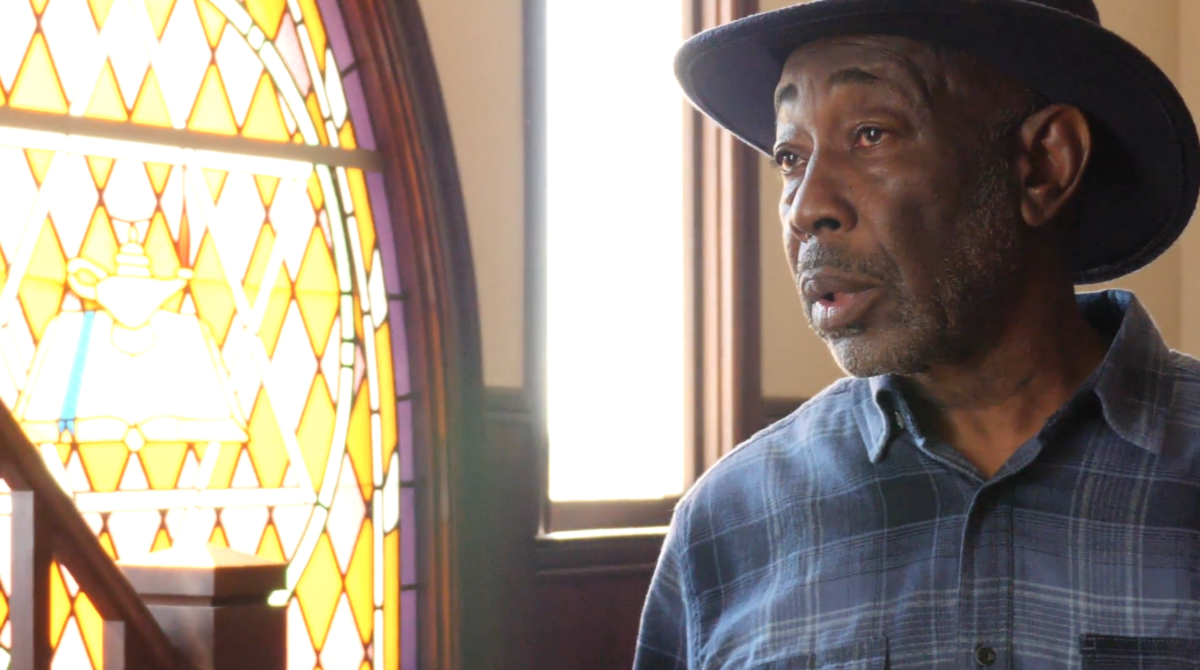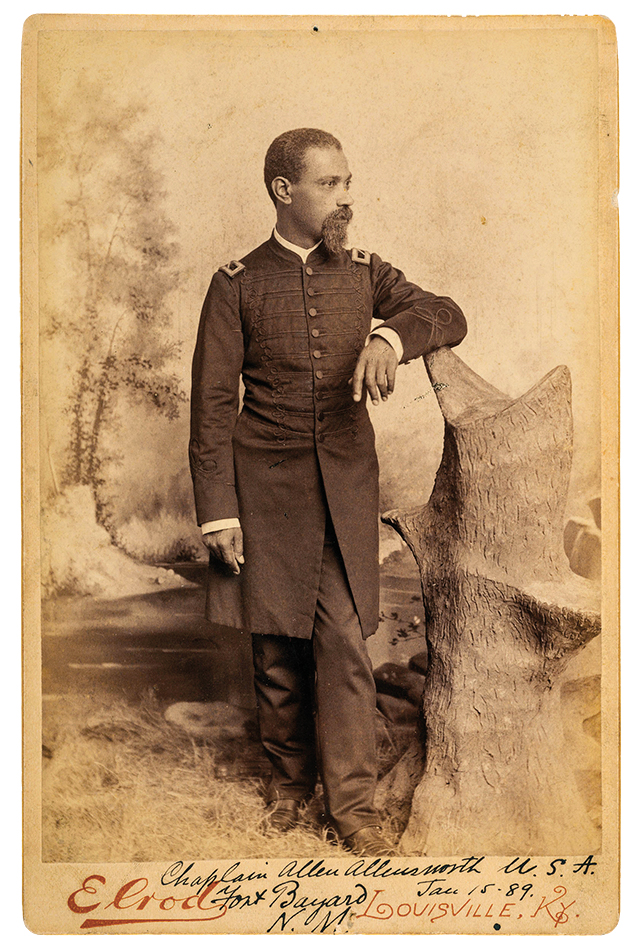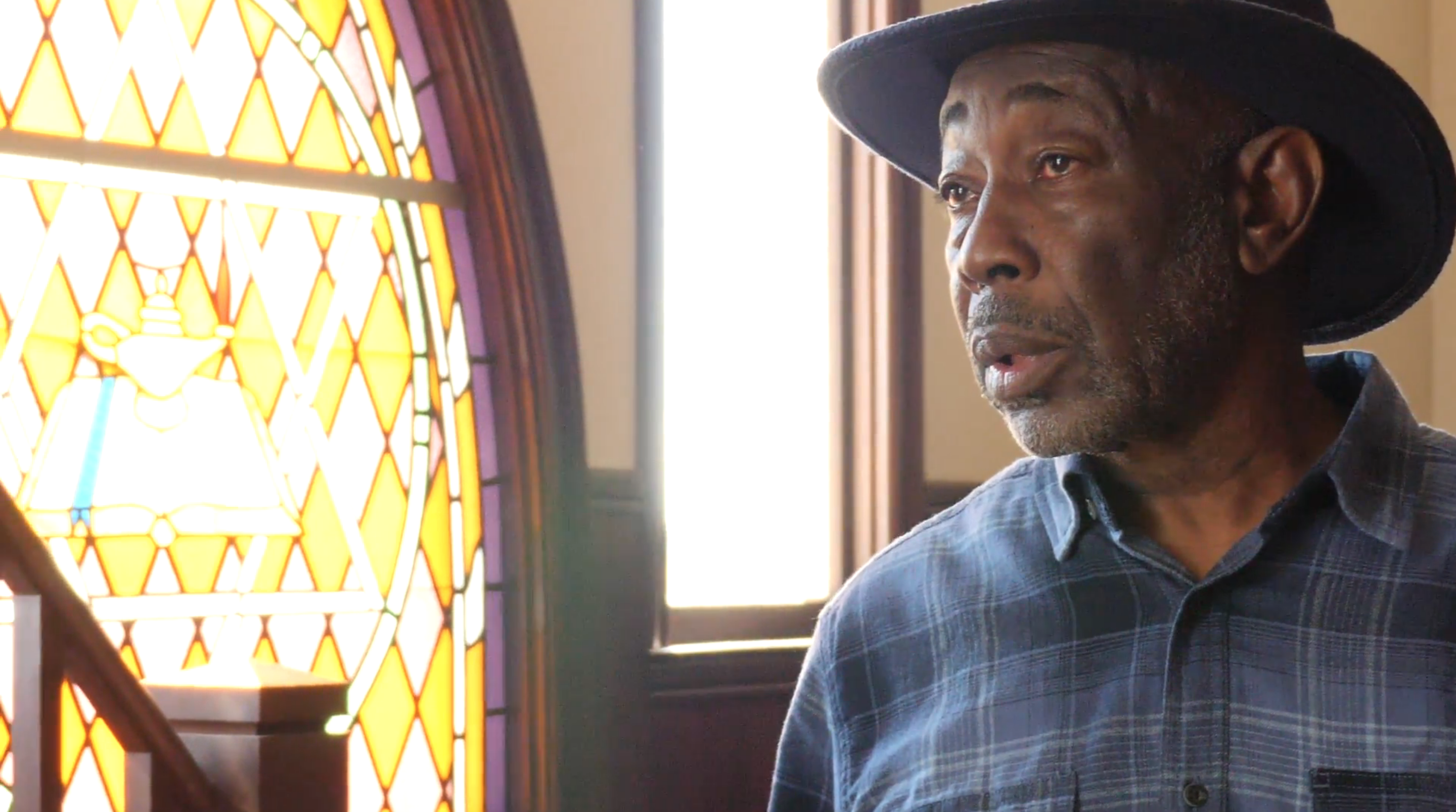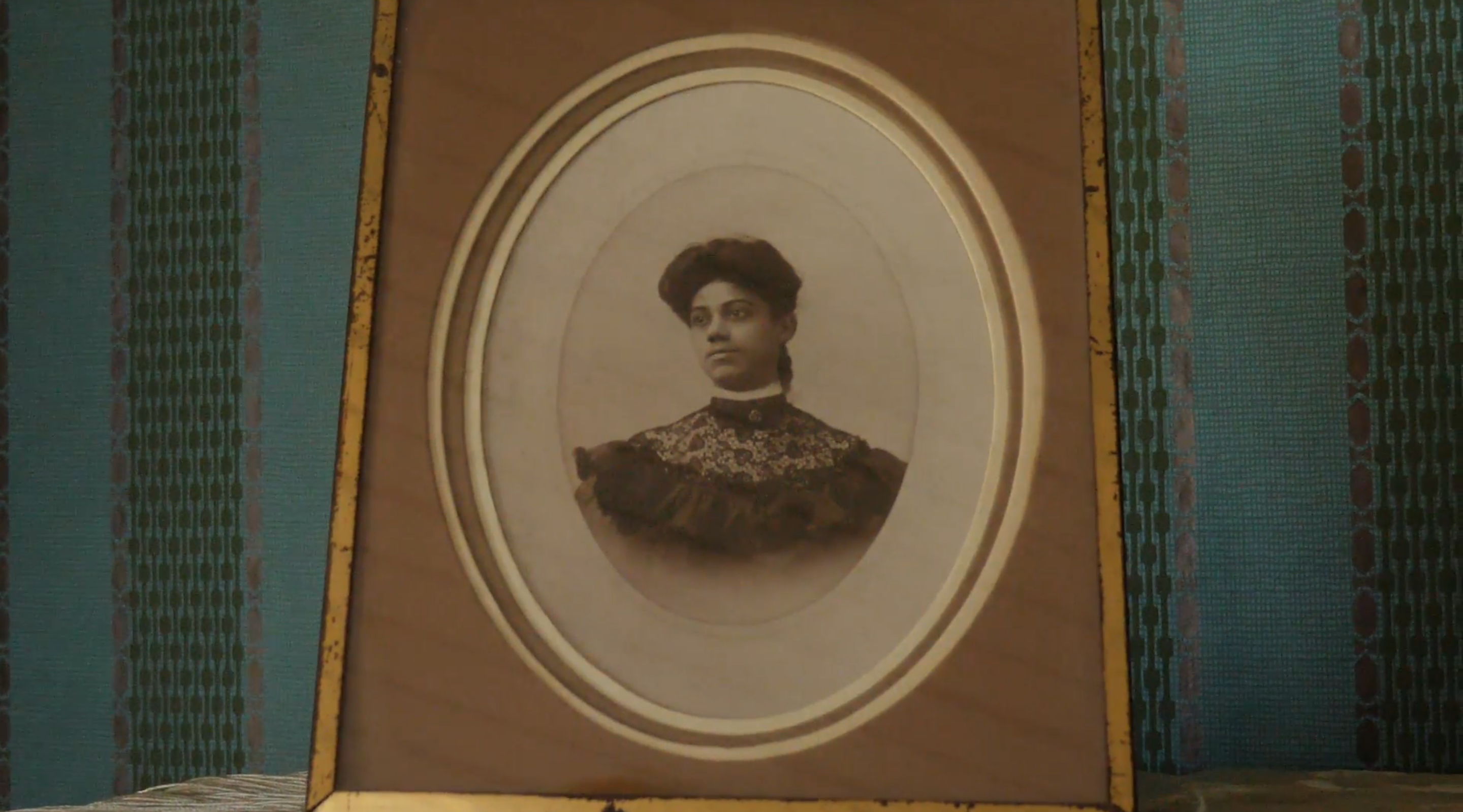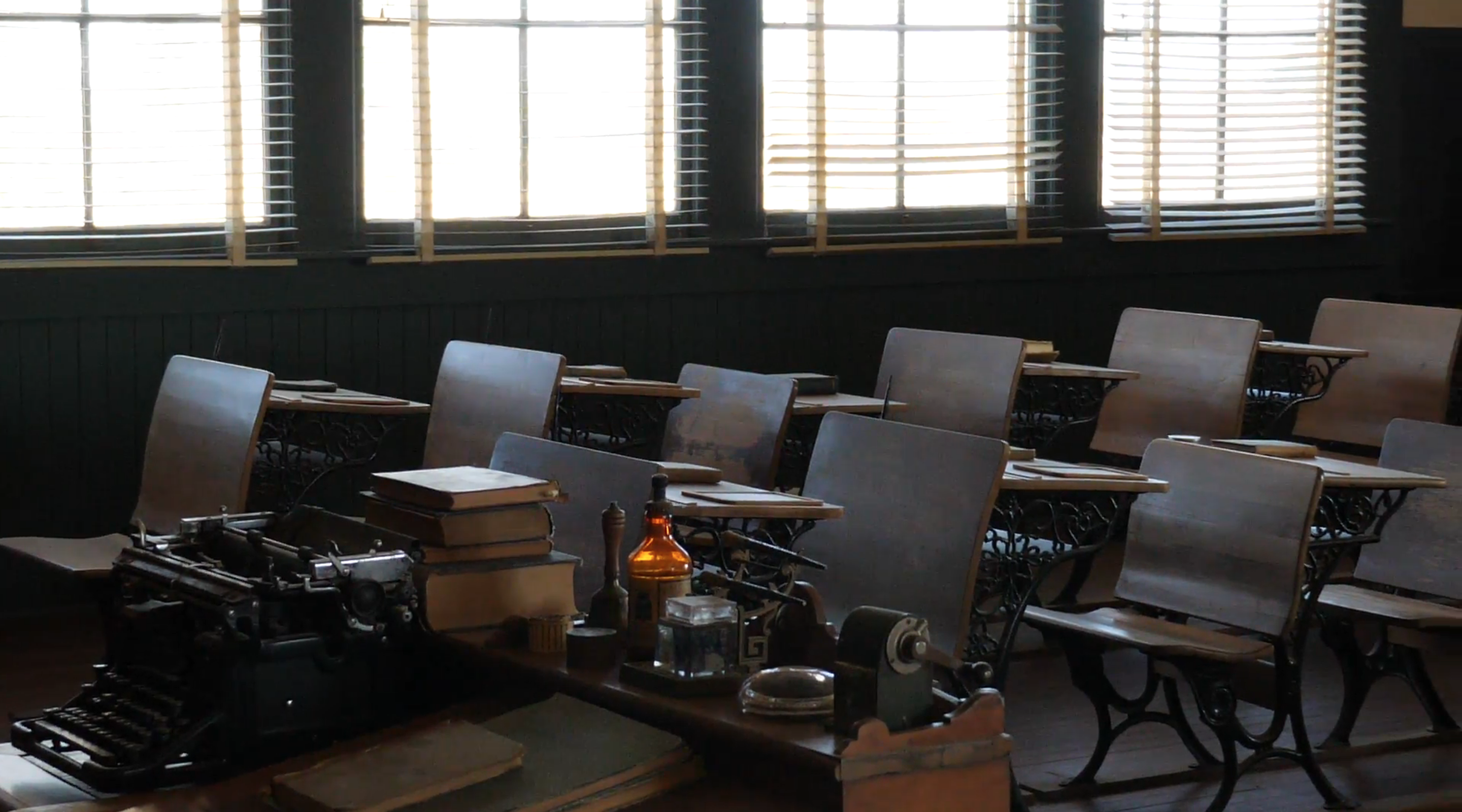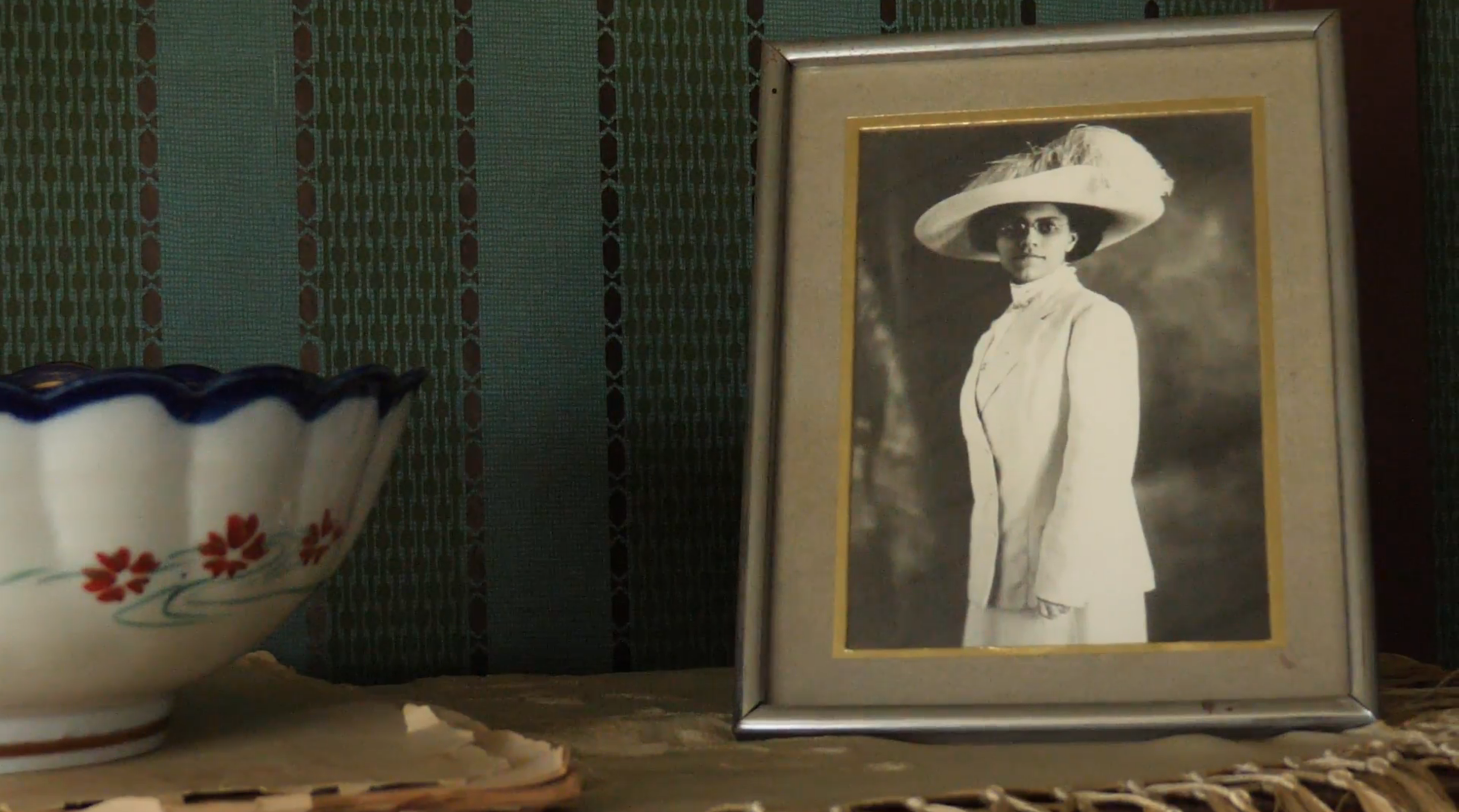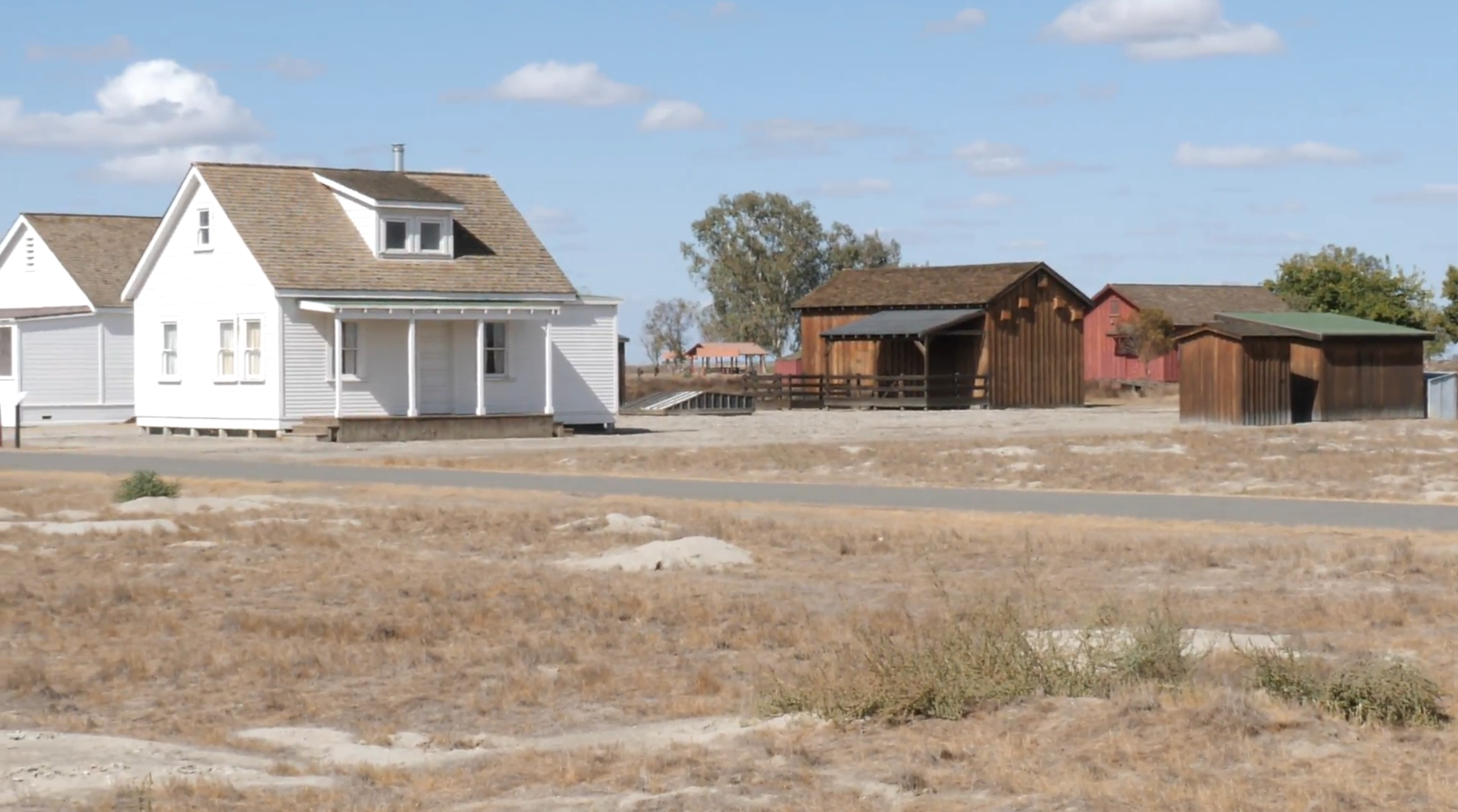
Editors’ note: Nowling researched and wrote this story as part of a course taught by the late Dr. Terrance Dean, a beloved Denison University Black history professor, scholar, journalist and community activist.
It was the turn of the last century – 1908 to be exact. Three thousand acres in California and a dream for a better life for Black pioneer families fueled an investment by an unlikely crew.
An Army colonel, a minister, a miner, a teacher who had graduated from Denison University, and a real estate agent banded together to buy settlement land for Black Americans, with the hopes of a brighter future for all. This Black colony, nestled outside of Los Angeles, was called Allensworth, and its history is worth uncovering.
A small group of us from Denison University sought to do exactly that. We pulled up in the fall of 2021 to the remnants of the dusty parcel in southwest Tulare County, now accessible in the Allensworth State Historic Park, to research and remember.
Scorched, sandy earth and desert shrubs that had once surrounded the homes of this former Black town dotted the landscape. At the time of its purchase, and even now, as we stood on the land, the Black colony of Allensworth seemed mythical, a utopian dream. The pioneers of Allensworth were in step with their time, yet futuristic in their vision.
The investors were a diverse lot: Lt. Colonel Allen Allensworth; William Payne, an educator and alumnus of Denison University; Dr. William H. Peck, an AME minister from Los Angeles; J.W. Palmer, a Nevada miner; and Harry Mitchell, a Los Angeles real estate agent. They were hoping to create a community inspired by educator and author Booker T. Washington’s philosophy that self-sufficiency was the only way for Black Americans to live a fulfilling life.
Around this time, newspaper ads across the country trumpeted the impending lynchings of African Americans. Crowds of families gathered to watch as victims were humiliated, tortured, and even burned alive. For African Americans, going about their daily lives posed a risk of death.
More than 4,400 lynchings occurred between 1877 and 1950 across the United States, according to a report released by the Equal Justice Initiative. As lynchings continued to spread, Southern white mobs grew more violent and targeted Black Americans based on accusations of assaults, sexual assaults, robbery, and even vagrancy.
This new reality was vastly different from the one envisioned by African Americans in the wake of emancipation and Reconstruction. For many, escape from the South and from this violence meant going west and trying to make their world anew.
Back then, California bore little resemblance to the Golden State we know today. California was an emerging state that was beginning to integrate itself within the U.S. economy and attracted people from across the world.
People believed that California was filled with pioneers who trekked through uncharted territory to make their dreams a reality. One such believer was Col. Allensworth, who was born an enslaved person in Kentucky and escaped during the Civil War and joined the Union Navy. He later joined the Army and retired in 1906 as a military chaplain and the highest-ranking Black officer in the U.S. Army.
He wished for Black Americans to “settle upon the bare desert and cause it to blossom as a rose.” For Black American pioneers, moving westward meant not only the pursuit of their dreams, but also freedom from the terrors of Jim Crow.
A safe haven meets with resistance
The new community of Allensworth – like Black Wall Street in Tulsa, Oklahoma and the Black communities of Rosewood, Florida; Seneca Village, New York; and Blackdom, New Mexico – drew the ire of white neighbors as its pioneers worked to create a safe haven for Black Americans.
The Allensworth residents began to establish themselves politically, as the community became a voting precinct and elected politicians, and economically as the colony continued to attract middle-class Black entrepreneurs, who brought the business with them.
And then a systematic effort was enacted to target and stymie the growth of Allensworth. The Pacific Water Company, the town’s water company, deliberately provided the town with only four water wells at the same time a neighboring town had 10.
Shortly after Allensworth began to feel the effects of not having enough water, the heart of the Allensworth economy was undercut. That blow was delivered by the Santa Fe Railroad Company, which diverted trains away from a stop in Allensworth.
The town had been strategically placed along the Santa Fe Railroad to ship goods into the state’s major cities. The town’s economy soon fell into freefall, and the demise of the Allensworth dream ensued.
And while this might sound like ancient history, the discrimination continues today in predominantly Black cities such as Flint, Michigan, and Newark, New Jersey, which just recently gained access to clean water after years of governmental inaction. It’s also visible in the ways that, within U.S. classrooms, the teaching of Black history is often under attack, and the other side of Black life remains untold.
Resurrecting Allensworth
Reading about a place like Allensworth may shed some light on the town’s history, but the history books often ignore the bigger story: the complex lives of the families that once lived there. Documenting the other side of Black life humanizes this community of trailblazers.
In mid-October 2021, I had the opportunity to travel to Allensworth with Dr. Terrance Dean, the late assistant professor of Black Studies at Denison University, and another student, Emily Walker, to get a closer look and to document the impact that Denison graduate William Payne had in helping to establish and subsequently run Allensworth, while also piecing together a history of a town that otherwise might be forgotten.
In his initial research about Allensworth, Dean said he was surprised by the connection that Denison had with one of the founders of California’s first Black colony.
Dean said that telling the story of Allensworth and Payne is important because “It [is] the story of a Black man during Jim Crow who, despite the odds, graduated from an elite liberal arts school, headed west, and co-founded the first Black colony, Allensworth.” His connection to the university, he said, “is a rich resource for our students to explore the history of Black Thought and racism through the experiences of a fellow Denisonian who made strides despite the obstacles.”
The community and its experiences help us understand more deeply the ideas that undergird Black Thought, critical race theory, and anti-blackness, Dean said, and the response to racism in America – creating an innovative space for and by Black people.
Listening circle
Upon our arrival at the state park, as our dust cloud settled, an older Black man walked down the steps of the former Allensworth Hotel. Emmett Harden, an Allensworth docent and husband of an Allensworth descendent, greeted us with a toothy smile and the tip of a straw hat. As we followed him inside, we were surrounded by a chorus of welcomes from three older Black women.
Sitting around a circular wooden table were Ann Williams, an Allensworth docent; Hazel Kennedy, niece-in-law to an Allensworth resident; Cecelia Pope Harden, daughter of an Allensworth descendent; and Mr. Harden, who stood behind us. They were grateful that we had shown up to help document the history of this place.
Williams and Mr. Harden took us on a tour of the restored homes and buildings, and it was clear that they once belonged to middle-class families. Many Allensworth families ordered their homes from the Sears Modern Homes catalog. They built a barbershop, general merchandise stores, schoolhouse, and church – and that is what remains of the old town. At Col. Allensworth’s house, an encased, silver-plated, fine-dining set captured the attention of everyone as visitors turned the corner into the dining room; in the kitchen sat a black wood stove and an icebox.
These items – markers of people who were doing well economically – adorned every home. And yet, the history books often describe these people as agricultural workers who fled the Jim Crow South. In fact, they had created a functioning middle-class community full of complicated lives and culture and joy – an identity that is not centered on the suffering of slavery.
Throughout the tour, when asked a question about the former residents, Williams asked if I wanted the government’s answer or an answer rooted in the oral history of the place.
This oral history is slowly slipping away, but descendants were eager to share their stories with us.
Kennedy and Mrs. Harden told us stories from their families, and like Williams, also pointed out that it is now difficult for them to remember all of them
In a brief moment, a youthful and quick-witted Williams admitted that she was in her 60s: “I am our youngest docent here. We need our young people to step up and help us remember our history.” Despite the seriousness of this fact, she was full of joy and energy.
Returning five months later
In the spring of 2022, our Denison group returned to the community surrounding the Allensworth State Historic Park, only to find that it continues to face the same problems that led to the demise of the former town. A major water pipeline that watered the ground in the desert sat ruptured and unworkable in the surrounding fields. By leaving the Allensworth community without adequate water, history is being repeated.
As we left the park, the sun stood high in the sky, revealing the parched land that Allensworth founders hoped would become the site of a major city. We pondered the many unknowns and untold truths about this place that have yet to be uncovered.
Time and history are slipping away, but for now, we remember: About two and a half hours northwest of Los Angeles sits the remnants of the Black Allensworth colony – a dream that discrimination helped destroy.

